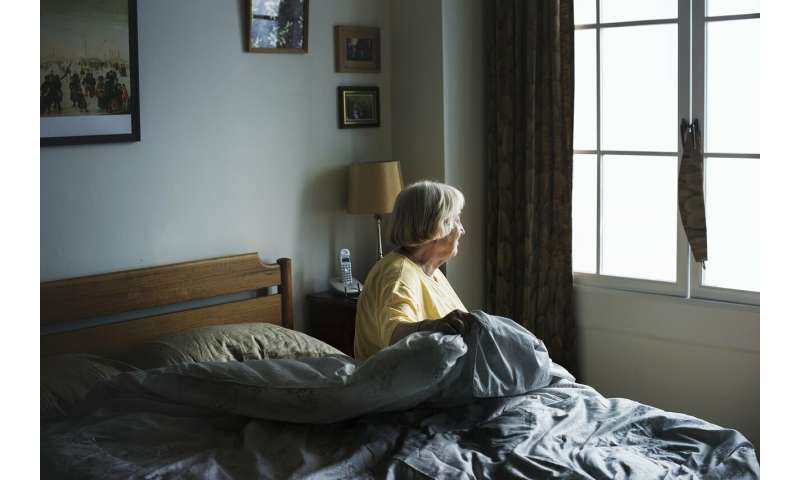
Nested in communities across the US, nursing homes serve as a societal safety net. Nursing homes provide essential care to individuals unable to live in the community. Roughly 1.3 million residents live in nursing homes receiving assistance with daily activities of living such as meals, dressing, and socialization. Additionally, more than 3 million older adults are discharged annually to nursing homes following a hospital stay to receive rehabilitative services like physical therapy and skilled nursing care.
More than 2,000 nursing homes in the US have reported COVID-19 cases within their facilities, often accompanied by heart-wrenching rates of death. Combatting the avalanche of death posed by the novel coronavirus in nursing homes requires concerted effort to align several conflicting priorities that have afflicted nursing homes for years. COVID-19 puts into full view the regulatory structures and payment models that jeopardize care for long term care residents and those receiving post-acute care.
Caring for COVID-19 patients after hospital discharge in a nursing home, alongside those who reside in a nursing home for long-term care, brings into stark relief the spatial and staffing challenges that this setting poses. Imagine you are a nursing assistant in a nursing home. While you are typically assigned to care for residents in a dementia care unit, exacerbated staffing challenges now require you to care for a person who recently received care in a hospital treating individuals infected with COVID-19. Both people require assistance with the most intimate elements of daily life such as getting to the toilet and taking a brief walk, making the rules of social distancing impossible to abide by. Both people continue to require meals services from a support team that serves all nursing home residents, including nutrition and facilities services. While the care needs of both groups overlap significantly, patients recovering from COVID-19 infections bring with them the possibility of spreading the virus to a large number of vulnerable long-long term care residents as well as a shared workforce. Once COVID-19 enters a nursing home, stopping the spread of the virus proves challenging and deadly.
Post-acute care following hospitalization has increased over the past decade. Hospital incentives to decrease inpatient length of stay coupled with Medicare funding for post-acute care services resulted in increased utilization of nursing homes as a discharge destination. Post-acute care represents an important line of business for nursing homes. Without post-acute care admissions, many nursing homes face financial uncertainty.
While accepting post-acute care patients recovering from COVID-19 presents clear risks to nursing home residents and the nursing home workforce, the financial consequences of not admitting individuals for post-acute care during this pandemic are also clear, and complicate the protection of residents and staff. Balancing the competing priorities of patient safety and financial stability often favors the latter. While the financial demise of nursing homes would further reduce the limited care options for older and low income adults who are unable to live in community settings, the risks of caring for COVID-19 patients should not be overlooked.
There are several ways we could mitigate this risk. The nursing home workforce requires expansion in size, training, and support to meet current and growing demands. Prior to the current pandemic, projections highlighted the need for additional nurses and nursing assistants to care for nursing home residents. Nursing assistants provide the majority of direct care in nursing homes, accompanied by teams of nurses, therapists, social workers, facility and food services staff. Nursing assistants, mostly female and identifying as ethnic minorities, commonly work more than one job and receive low pay. As a result, retaining the existing workforce and recruiting new providers proves difficult. Protecting the current nursing home workforce requires equitable pay, workers’ protections (including an adequate supply of personal protective equipment), and greater investment in professional development.
Instead of regulating nursing homes at the state level, a regional care strategy should be implemented that involves local departments of health. Tracking of COVID-19 cases in nursing homes has not been consistent at any level of government, as evidenced by recent attempts by journalists to quantify the number of nursing homes with COVID-19 cases. The existing system of state nursing home oversight lacks the capacity to reinforce care delivery at this crucial moment, and instead imposes fines on facilities that experience outbreaks. Instead, oversight should promote proactive planning and partnership, focusing on shared goals and devoted resources to achieving them.
Nursing homes should be integrated into local public health responses, particularly in times of crisis. The Society for Post-Acute and Long-Term Medicine published a statement lambasting state government mandates for nursing homes to accept new admissions from hospitals. CMS has recently relaxed its rule that it will only pay for post-acute care after a 3-day hospital stay, which is a step in the right direction. But this fails to address local contingency planning for alternative care sites able to accept recovering COVID-19 cases. Building and maintaining relationships between nursing homes and local departments of health could stimulate meaningful collaborations in addressing public health issues further magnified by the COVID-19 pandemic, such as food insecurity and social isolation.
Nursing homes caring for the people most vulnerable to COVID-19 need capital investment, a protected workforce, community partners, and a critical analysis of current regulatory and payment practices. On a broader level, we need a national conversation on alternatives ways to financing long term care, as discussed in this new brief by the Leonard Davis Institute. Our current system fails to provide people with social protection against the risk for needing long term care, and fails to adequately fund home, community, and institutional services to meet the needs of an aging population.
Source: Read Full Article
